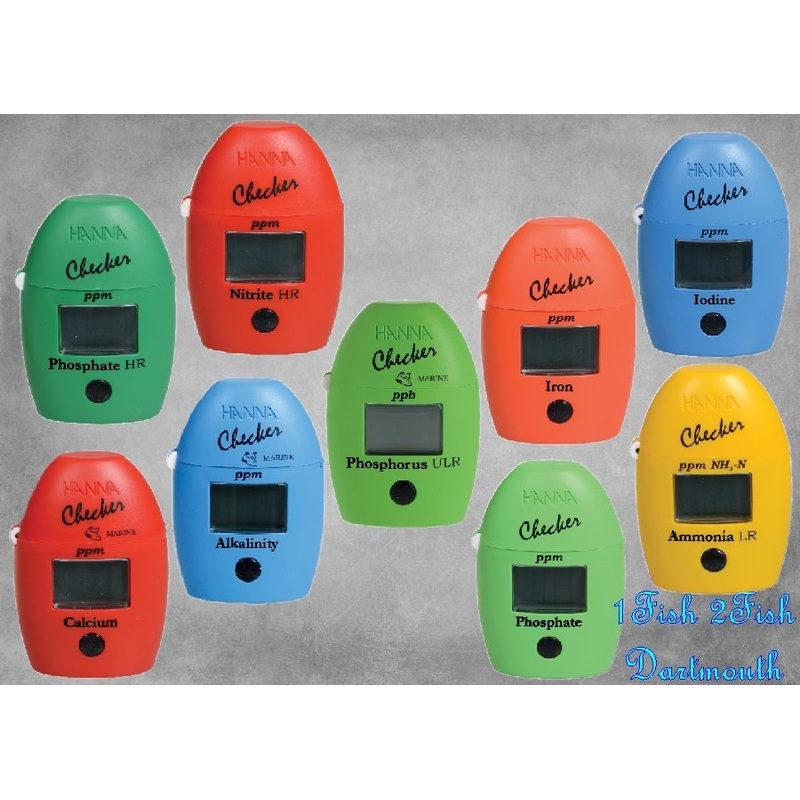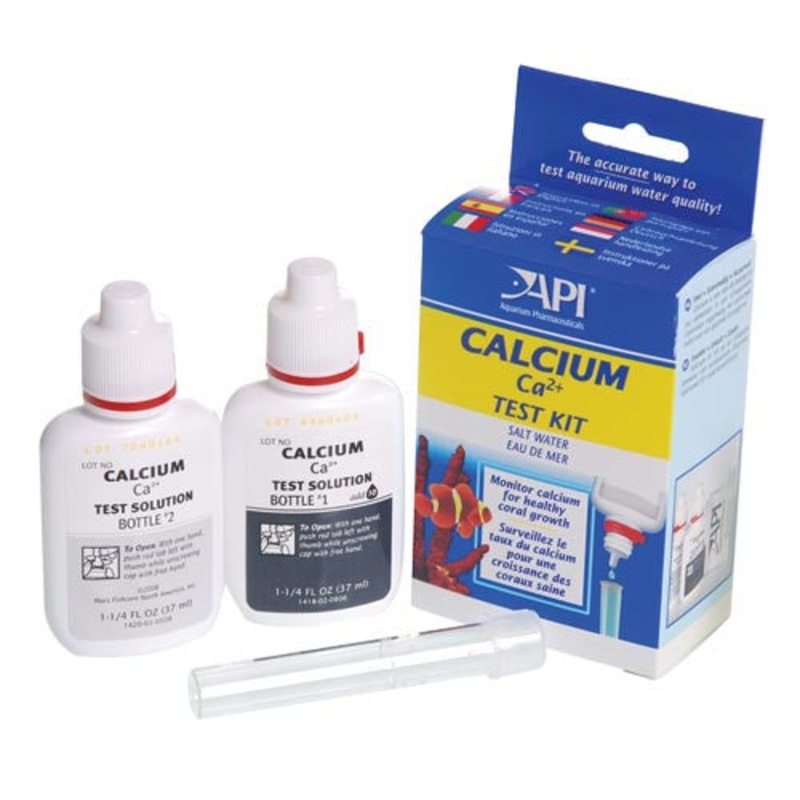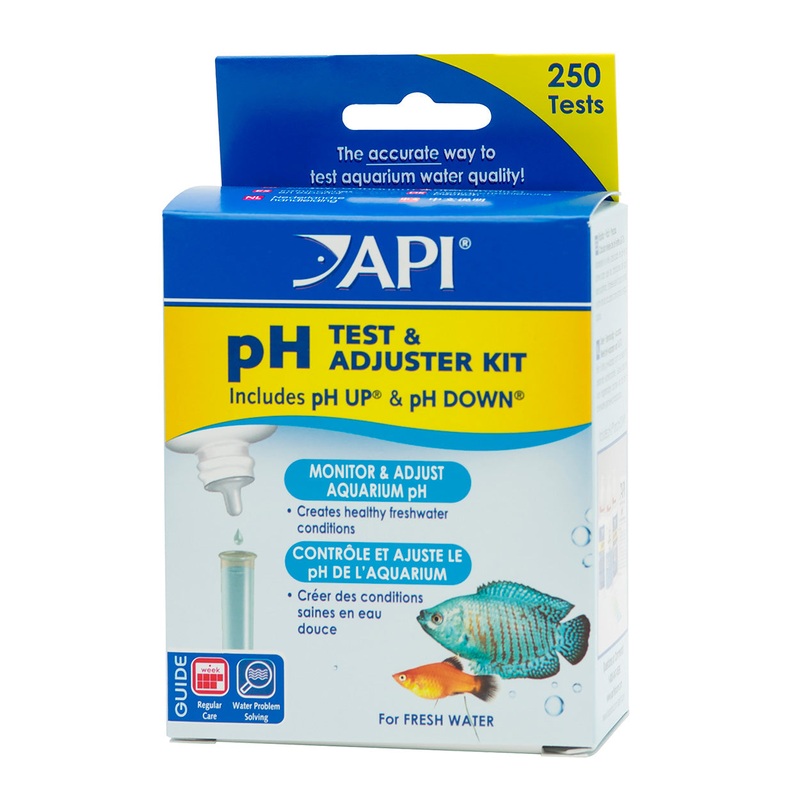Description
Tests tap water and freshwater aquariums for general hardness (GH) and carbonate hardness (KH). Helps detect stress on fish caused by rapid pH shifts, which result from low KH levels and helps aquarists duplicate the natural habitat of their fish.
KH & GH Test Instructions:
What is Carbonate Hardness (KH)?
Carbonate hardness (also known as alkalinity) is the measure of carbonate (CO32-) and bicarbonate (HCO3-) ion concentrations dissolved in water. These minerals are present in municipal, well, and bottled spring water. The level of carbonate hardness in tap and bottled water depends on the source of the water and the treatment processes it has undergone. Carbonate hardness helps stabilize pH in the aquarium. An aquarium with a low KH level (50 ppm or less) will tend to be acidic. Aquariums with very low KH are subject to rapid pH shifts, if not monitored carefully. Water with a high KH level (= 200 ppm) usually has a high pH. The Aquarium Pharmaceuticals KH (Carbonate Hardness) Test measures KH in German degrees (dKH). To convert dKH to parts per million (ppm), multiply dKH x 17.9.
Directions for Testing Carbonate Hardness (KH):
- Read thoroughly before testing. Do not allow Test Solutions to get into aquarium.
- To remove childproof safety cap: With one hand, push red tab left with thumb while unscrewing cap with free hand.
- Rinse a clean test tube with water to be tested.
- Fill the test tube with 5 ml of aquarium water (to the line on the test tube).
- Add Carbonate Hardness Test Solution, one drop at a time, holding dropper bottle upside down in a completely vertical position to assure uniformity of drops. After first drop is added, solution will turn blue. If the water sample contains only 1dKH, the solution will turn from clear to its yellow endpoint after the first drop is added.
- Cap the test tube and invert several times after each drop. Keep count of the drops being added. Do not hold finger over open end of the tube, as this may affect the test results.
- The test is completed when the water in the test tube, after having been shaken, turns from blue to yellow. If you have difficulty discerning the color after the first drop of test solution is added, remove the cap from the test tube and while holding it over a white background, look down through the tube.
- The Carbonate Hardness value is determined by the number of drops of the reagent that must be added to turn the water in the test tube bright yellow. Each drop is equal to 1 dKH or 17.9 ppm KH, (see the chart).
What is General Hardness (GH)?
General hardness is the measure of calcium (Ca2+) and magnesium (Mg2+) ion concentrations dissolved in water. These minerals are present in municipal, well, and bottled spring water. The level of general hardness in tap and bottled water depends on the source of the water and the treatment processes it has undergone. Hard water (= 200 ppm) is high in calcium and magnesium, while soft water (50 to 100 ppm) is low in these minerals. The Aquarium Pharmaceuticals GH (General Hardness) Test measures GH in German degrees (dGH). To convert dGH to parts per million (ppm), multiply dGH x 17.9.
Directions for Testing General Hardness (GH):
- Read thoroughly before testing. Do not allow Test Solutions to get into aquarium.
- To remove childproof safety cap: With one hand, push red tab left with thumb while unscrewing cap with free hand.
- Rinse a clean test tube with water to be tested.
- Fill the test tube with 5 ml of aquarium water (to the line on the test tube).
- Add General Hardness Test Solution, one drop at a time, holding dropper bottle upside down in a completely vertical position to assure uniformity of drops. After first drop is added, solution will turn orange. If the water sample contains only 1dGH, the solution will turn from clear to its green endpoint after the first drop is added.
- Cap the test tube and invert several times after each drop. Keep count of the drops being added. Do not hold finger over open end ofthe tube, as this may affect the test results.
- The test is completed when the water in the test tube, after having been shaken, turns from orange to green. If you have difficulty discerning the color after the first drop of test solution is added, remove the cap from the test tube and while holding it over a white background, look down through the tube.
- The General Hardness value is determined by the number of drops of the reagent that must be added to turn the water in the test tube green. Each drop is equal to 1 dGH or 17.9 ppm GH (see the chart).
GH and KH in the Aquarium
Aquarists seek to provide a healthy aquarium environment by duplicating the water conditions of the natural habitats of their fish. Tap water rarely provides the water conditions necessary to maintain an optimal aquarium. Some tap water supplies have a very low KH level (below 3 dKH). This type of water has very little pH buffering capacity and can contribute to wide pH swings in the aquarium. When water evaporates from the aquarium, it leaves behind hardness ions. Topping off with tap water simply adds more minerals to the aquarium, resulting in a steady increase in GH. It is therefore necessary to test the GH and KH frequently to monitor water quality and prevent stressful conditions from occurring. Use the table below to create the ideal water hardness levels for your aquarium fish. When keeping a community aquarium with a variety of tropical fish, adjust the GH and KH to 3 – 6 (50 – 100 ppm).
GH & KH RANGE – Aquarium Life
- 0-3 (0-50 ppm) discus, arowanas, elephantnose, neons, cardinals, live plants
- 3-6 (50-100 ppm) Most tropical fish including angelfish, cichlids, tetras, botia, live plants
- 6-11 (100-200 ppm) Most tropical fish including swordtails, guppies, mollies, goldfish
- 11-22 (200-400 ppm) Rift lake cichlids, goldfish, brackish water fish
Reducing General Hardness
General Hardness can be lowered with Aquarium Pharmaceuticals Water Softener Pillow. The ion exchange resin in the Water Softener Pillow lowers GH by removing calcium and magnesium ions. The Water Softener Pillow will not lower KH. Partial water changes with deionized water will gradually reduce GH to the desired level.
Increasing General Hardness
African cichlids and brackish water fish require hard water with a pH of 8.2. Commercially available African cichlid or marine salts will increase GH and KH levels.
Lowering Carbonate Hardness
ALowering KH is best accomplished by diluting the aquarium water with deionized water. Deionized water contains no KH or GH. Partial water changes will gradually reduce KH to the desirable level.
Increasing Carbonate Hardness
KH can be increased with Aquarium Pharmaceuticals PROPER pH buffers. PROPER pH 6.5, 7.0 and 7.5 are non-carbonate buffers that automatically adjust pH and increase KH. PROPER pH will raise or lower pH, stabilizing it at the pre-set pH level. PROPER pH 8.2 is a carbonate buffer suitable for marine and African cichlid aquariums.
Harmful:
- KH TEST Causes burns. In case of contact with eyes or skin, flush with water for 15 minutes and seek medical attention immediately.
- GH TEST contains Triethanolamine.
- Harmful by inhalation.
- Irritating to eyes, respiratory system and skin. If in contact, flush with water for 15 minutes and seek medical attention immediately.
- Keep out of the reach of children.







Reviews
There are no reviews yet.